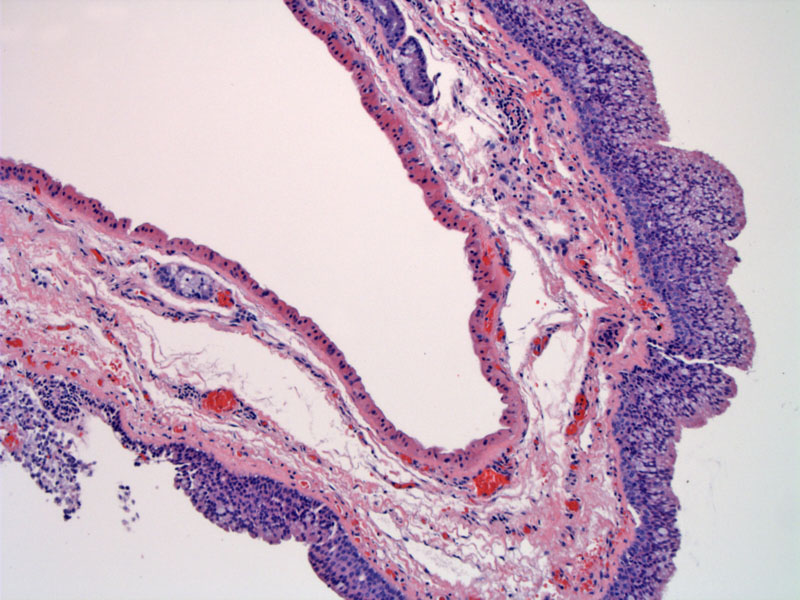

The laryngocele consists of a cystic space resulting from abnormal dilatation of the laryngeal saccule, which rests between the ventricular folds, the base of the epiglottis and the inner surface of the thyroid cartilage. Image
It may be lined by a variety of epithelial types -- in this example there is bland oncocytic epithelium. Respiratory type epithelium is also common, as is squamous metaplasia.
A laryngocele represents a dilation of the saccule containing air, and it maintains communication with the larygneal lumen. Most are unilateral but up to 1/4 may be bilateral. There are three types: internal (dilated confined to the intrinsic larynx); external (dilated sacs extend between the false cord and thyroid cartilage and laterally through thyrohyoid ligament; and mixed. One important complication is infection.
Most commonly encountered in the 5-8th decade. Symptoms are rare, but hoarseness, coughing, dysnea may occur. There are some case reports on patients presenting with airway obstruction. May arise in those with a tendency to excessive increase intralaryngeal pressure, such as musicians, or co-exist with laryngeal squamous cell carcinoma.
Asymptomatic cases can be left alone. Large or symptomatic ones may necessitate excision.